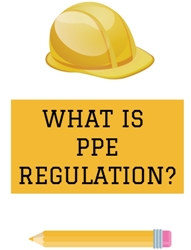If you are an employer or employee working in a high-risk industry, you should already be familiar with the meaning of PPE. However, in the real world that isn’t always the case. Most employers and employees will not be completely familiar with the PPE regulation even if they know roughly what it entails. Some staff might have heard the term but not even know what it means. And yet, it is something that could save your life and that has taken working people hundreds of years to achieve.
Most employers and employees won’t be completely familiar with the PPE regulations in 2019, even if they know roughly what they entail. Some staff might have heard the term but not know what it means or how it applies to them.
And yet PPE is something that could save your life in the workplace, and the hundreds of years of development that have gone into making PPE so effective should be taken advantage of.
What is PPE
PPE stands for personal protective equipment and the regulations surrounding it come from the Personal Protective Equipment at Work Act from 1992. Following on and adding to the Health and Safety at Work Act from 1974, the 1992 act stipulated that PPE should only be used as last resort when all other avenues of achieving the work in a controlled and safe environment had been ruled out.
In other words, if the job has to be done by a human and is dangerous, then following PPE regulations is the absolute minimum required to keep people safe at work, by law.
PPE regulations 2019
What PPE needs to be worn by employees depends on what environment they’re working in. For example, respiratory equipment is essential for those working with hazardous substances and protective equipment for the face, head, eyes, hands and feet needs to be worn on building sites.
PPE regulations can also include the obligatory wearing of safety harnesses when working at height and it even governs more detailed aspects of the working environment such as the use-by date of hard hats.
As well as defining what safety equipment is necessary, the law requires employers to provide it and ensure it’s being used at all times. The regulations also cover the assessment of PPE equipment before and after use so that it is fit for purpose. All PPE equipment has to be maintained and stored properly and come with proper training and instruction in how to use correctly.
In order to ensure you are using all the necessary PPE equipment, you are required to carry out a PPE assessment of your workplace and perform detailed risk assessments of any potentially dangerous activities. As an employer, you are legally responsible for providing PPE equipment, but you must also enforce correct and proper use.
You should choose equipment that suits and fits the wearer and even give employees a say in their choice of safety equipment.
Why is PPE necessary?
As we mentioned above, all of the PPE regulations that govern workplaces in 2019 have been brought into place because of the tireless campaigning of many people across generations. From the dawning of the industrial age onwards, countless people have been killed or injured at work and PPE regulations represent the efforts of the best part of two centuries to prevent this happening.
Although the regulations have gone a long way to limit the risks of simply doing your job, in 2017/18 a total of 144 people were still fatally injured at work. And while accidents can happen, any number above zero is still far too high.
If you are unsure about PPE or have any questions about health and safety at work, then visit the Health and Safety Executive website to find out more.





Leave a comment